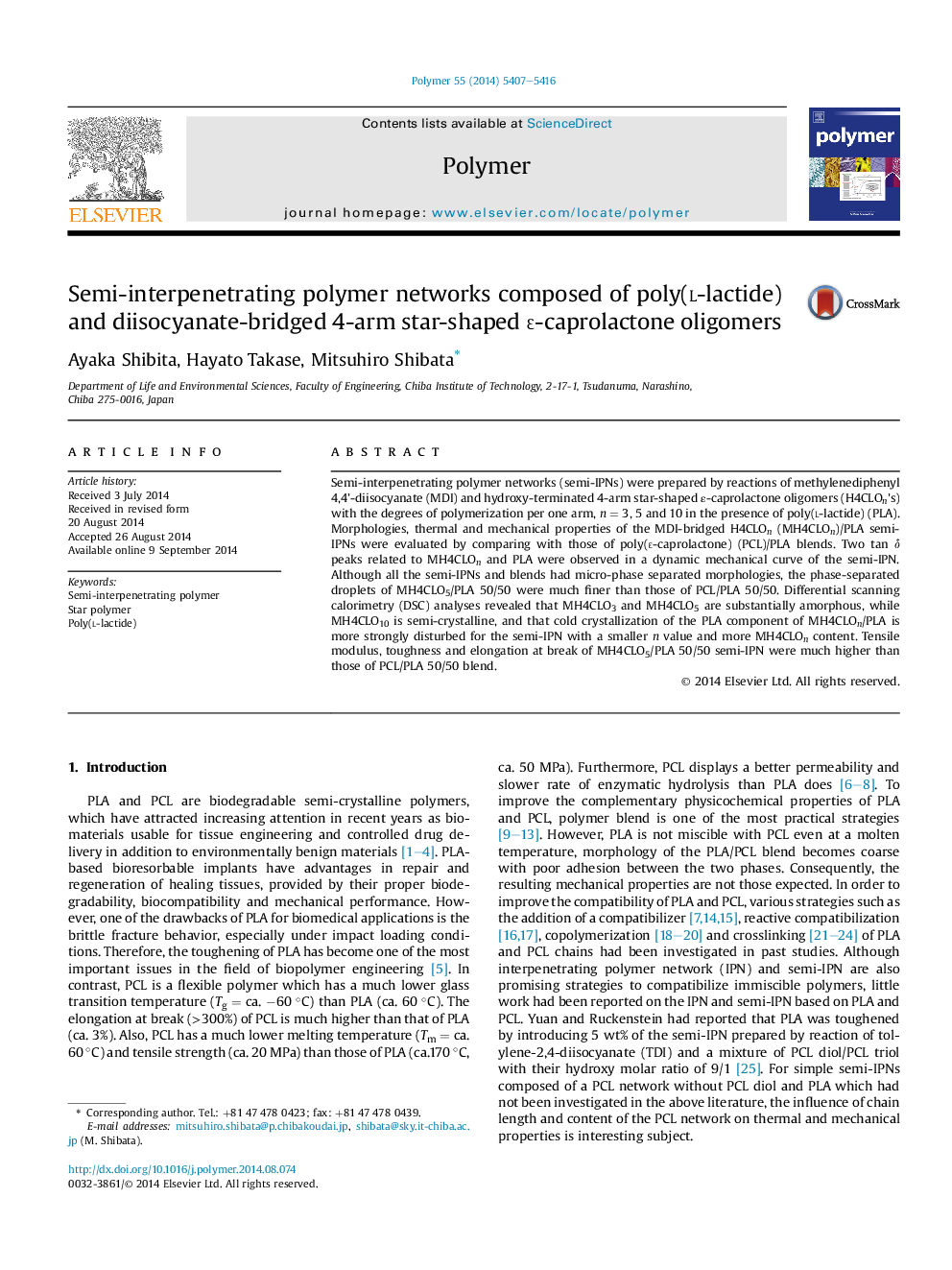| Article ID | Journal | Published Year | Pages | File Type |
|---|---|---|---|---|
| 5180774 | Polymer | 2014 | 10 Pages |
â¢New semi-IPNs composed of star-shaped 4-arm PCL networks and PLA were prepared.â¢Crystallization of the PLA was more disturbed for the semi-IPN with a shorter arm.â¢Phase-separated droplets of a 50/50 semi-IPN were finer than a PCL/PLA 50/50 blend.â¢The semi-IPN exhibited a higher elongation and toughness than the PCL/PLA blend.
Semi-interpenetrating polymer networks (semi-IPNs) were prepared by reactions of methylenediphenyl 4,4'-diisocyanate (MDI) and hydroxy-terminated 4-arm star-shaped ε-caprolactone oligomers (H4CLOn's) with the degrees of polymerization per one arm, n = 3, 5 and 10 in the presence of poly(l-lactide) (PLA). Morphologies, thermal and mechanical properties of the MDI-bridged H4CLOn (MH4CLOn)/PLA semi-IPNs were evaluated by comparing with those of poly(É-caprolactone) (PCL)/PLA blends. Two tan δ peaks related to MH4CLOn and PLA were observed in a dynamic mechanical curve of the semi-IPN. Although all the semi-IPNs and blends had micro-phase separated morphologies, the phase-separated droplets of MH4CLO5/PLA 50/50 were much finer than those of PCL/PLA 50/50. Differential scanning calorimetry (DSC) analyses revealed that MH4CLO3 and MH4CLO5 are substantially amorphous, while MH4CLO10 is semi-crystalline, and that cold crystallization of the PLA component of MH4CLOn/PLA is more strongly disturbed for the semi-IPN with a smaller n value and more MH4CLOn content. Tensile modulus, toughness and elongation at break of MH4CLO5/PLA 50/50 semi-IPN were much higher than those of PCL/PLA 50/50 blend.
Graphical abstractDownload high-res image (320KB)Download full-size image
